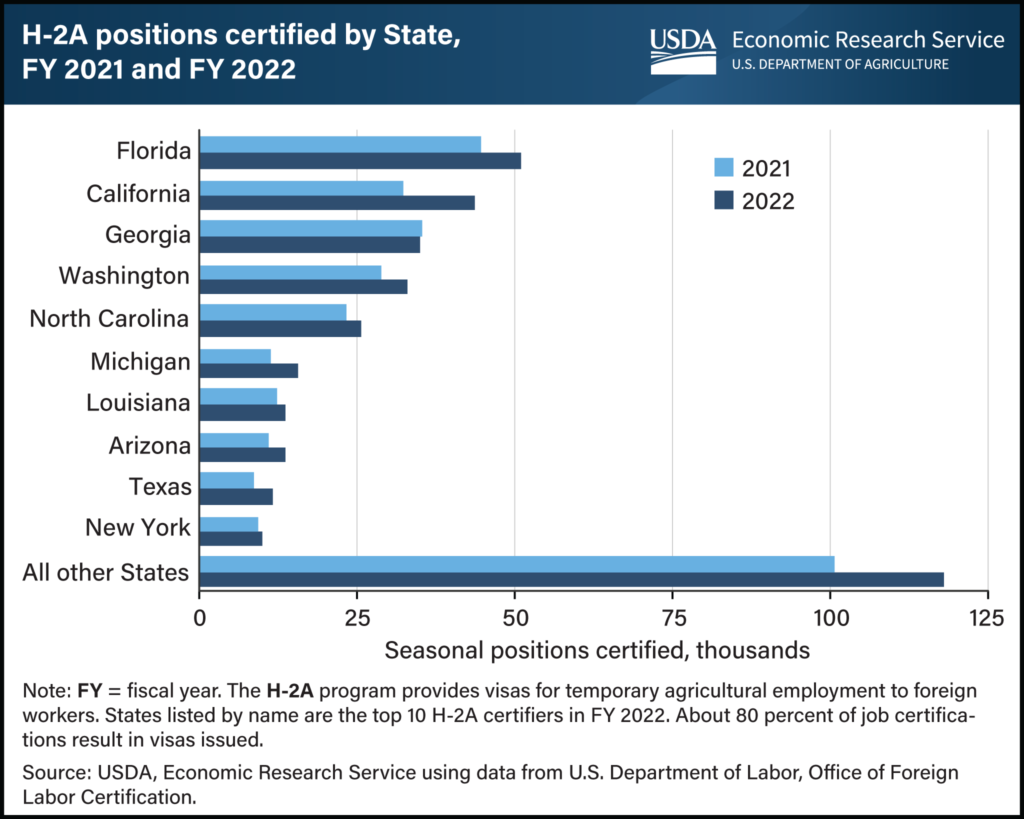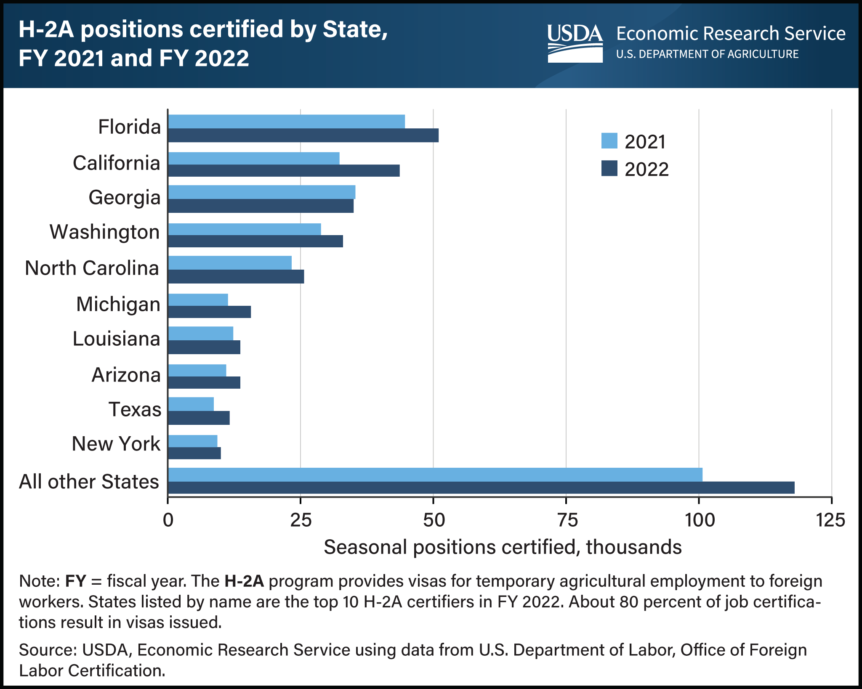
By Clint Thompson
California’s surge up the states leaderboard pertaining to H-2A workers is a plus for Southeast specialty crop producers, according to one industry leader.
Chris Butts, executive vice president of the Georgia Fruit and Vegetable Growers Association (GFVGA), believes it will help enlighten legislative leaders about the challenges associated with navigating through a complicated and expensive program.
“I think California over the years has not been as reliant upon the program. They didn’t understand the challenges that we have faced in the Southeast with the H-2A program. Now that they have a growing number of folks utilizing the program, they’re starting to feel the pain of those wages that are really disconnected from the true labor rates in your local communities,” said Butts at the Georgia Farm Bureau meeting in early December. “My hope is that it’s not a Southeast or an east coast problem anymore. Not that we’re looking to share in the misery with anyone, but if more and more folks are starting to be impacted by this, then maybe it’ll be easier for us to get people to listen.”
What is H-2A?
According to the U.S. Citizenship and Immigration Services, the H-2A program allows U.S. employers or U.S. agents who meet specific regulatory requirements to bring foreign nationals to the United States to fill temporary agricultural jobs. But growers have often chimed in with negative feelings toward the program, saying it’s too convoluted and expensive, especially when producers are responsible for housing and travel expenses as well.
“We’re working with a set of rules that set up the H-2A program that are old and outdated and leave our guys at a disadvantage. It’s past time that we take a look at a congressional fix to redefine the boundaries of the program, how it works and how it can serve today’s farmers, which is different than our needs were 15, 20, 25 years ago,” Butts said.
Florida, California, Georgia Top Three
According to the U.S. Department of Agriculture Economic Research Service, Florida, California and Georgia had the top three H-2A positions certified in fiscal year 2022. Florida had 14% of the total H-2A jobs certified, followed by California at 12% and Georgia at 9%. California increased by 11,000 jobs or 35% from 2021.
“I think it’s like anything else. We see fewer and fewer domestic workers that are willing to do this type of work. It’s the same in California. I think they had more folks, just a larger population base to pull from, but (now)we just can’t get domestic workers that are willing and able to do this work,” Butts said.










